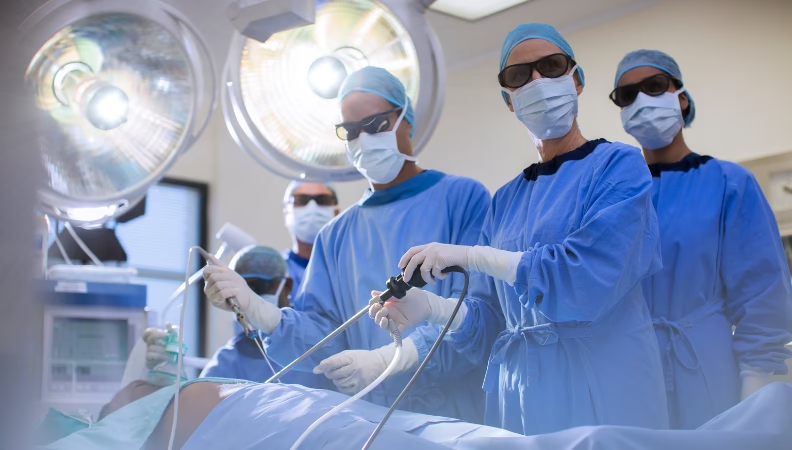Revolutionizing Precision and Recovery
Orthopedic surgery has come a long way over the years, and perhaps one of the most revolutionary developments is the application of robotic technology. Robotic-assisted systems are revolutionizing the manner in which surgeons conduct procedures, resulting in greater accuracy, quicker recovery periods, and improved patient outcomes. In this article, we delve into the new robotic technologies in orthopedic surgery and how they are changing the landscape.
How Robotic Technology Works in Orthopedic Surgery
Firstly, robotic-assisted surgery is not a matter of substituting surgeons but augmenting their capabilities. Moreover, it enhances precision, allowing for more accurate procedures. In addition, it reduces fatigue, enabling surgeons to perform complex operations more efficiently. Furthermore, it provides better visualization, improving surgical outcomes. Ultimately, this technology supports surgeons rather than replacing them, leading to safer and more effective treatments. They assist in enhancing precision, minimizing human fallibility, and maximizing patient-specific therapy. Let’s see how it works:-
Preoperative Planning: Sophisticated imaging methods like CT scans and MRIs develop a 3D image of the patient’s bone or joint structure, enabling accurate surgical planning.
Real-Time Navigation: In surgery, robotic platforms offer an instantaneous response, allowing surgeons to make sub-millimetric adjustments with amazing accuracy.
Minimally Invasive Approach: The majority of robotic surgeries employ small incisions, resulting in reduced tissue trauma and quicker recovery.
These sophisticated methods provide higher surgical accuracy, minimizing complications and enhancing long-term outcomes.
Types of Robotic Systems in Orthopedic Surgery
A number of robotic systems are currently commonly used for a variety of orthopedic surgeries, such as knee, hip, and spine surgery. Some of the most prominent ones are:-
Mako Robotic-Arm Assisted Surgery (Stryker)
Utilized for total and partial knee replacement, as well as hip replacement.
Offers patient-specific preoperative planning with live adjustments.
Enhances implant positioning accuracy, resulting in more natural joint motion.
ROSA (Robotic Surgical Assistant by Zimmer Biomet)
Mainly utilized for knee replacement surgeries.
Utilizes real-time tracking of data to guide surgeons in maximizing joint alignment.
Enhances mobility post operation and minimizes recovery time.
ExcelsiusGPS by Globus Medical
Firstly, this technology is meant for use in spinal operations, specifically in minimally invasive spinal fusion procedures. Moreover, it improves accuracy during surgery and screw positioning, minimizing complications. In addition, it helps reduce surgical errors and enhances patient safety. Furthermore, it minimizes exposure of both surgeons and patients to radiation, making the procedure safer. Ultimately, this innovation is transforming spinal surgeries with greater precision and efficiency.
Applicable in robotic knee replacement surgery.
No need for a preoperative CT scan, which means radiation exposure is limited. Moreover, the procedure utilizes real-time mapping to personalize implant placement during surgery. As a result, these robotic systems have significantly enhanced orthopedic surgery outcomes. Furthermore, they provide improved alignment, less tissue damage, and faster recovery. Ultimately, this advancement is transforming orthopedic care for better patient results.
Advantages of Robotic-Assisted Orthopedic Surgery
The advent of robotic technology has resulted in a number of benefits for patients and surgeons alike. Some of the most important advantages are:-
Improved Precision – Robotic systems offer sub-millimeter precision, minimizing errors in implant placement.
Minimally Invasive Procedures – Smaller incisions result in less blood loss, less pain, and quicker healing.
Personalized Surgical Plans – Every procedure is customized to the patient’s individual anatomy, enhancing overall results.
Reduced Recovery Time – Patients tend to have faster rehabilitation and a shorter hospital stay.
Lower Risk of Complications – Precise implant placement reduces the risk of joint instability or early wear.
These developments are transforming orthopedic surgery, enabling patients to recover mobility more quickly with fewer complications.
The Future of Robotics in Orthopedic Surgery
Robotic surgery continues to advance, with newer technologies promising to make it even more effective. Some of the future advancements include:-
AI and Machine Learning Integration – Future robotic systems will employ artificial intelligence to forecast surgical outcomes and tailor procedures.
Enhanced Haptic Feedback – Surgeons will have real-time haptic feedback, improving accuracy.
Remote Surgery Potential – With 5G and robotic-assisted telesurgery advancements, remote orthopedic surgery could be on the horizon.
Intelligent Implants – Intelligent implants that interact with robotic systems could enhance long-term joint function and minimize revision surgeries.
As research continues, robotic-assisted orthopedic surgery will keep raising the bar for efficiency, safety, and patient satisfaction.
conclusion
Robotic technology in orthopedic surgery is revolutionizing the specialty by enhancing surgical accuracy, minimizing recovery times, and overall improving patient outcomes. With each passing day bringing new innovation in AI, real-time navigation, and customized planning, robotic-assisted surgery is increasingly becoming the gold standard for orthopedic treatment.
As these technologies are made increasingly available, orthopedic care across the globe can be delivered faster, more effectively, and more safely to patients. If you or a family member is weighing the prospect of orthopedic surgery, speaking with your surgeon about the possibility of using robotic-assisted technology may significantly impact your post-op recovery and mobility.



